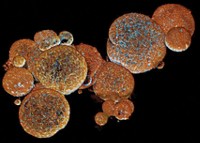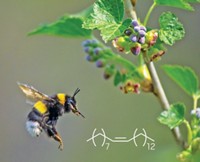Advertisement
Grab your lab coat. Let's get started
Welcome!
Welcome!
Create an account below to get 6 C&EN articles per month, receive newsletters and more - all free.
It seems this is your first time logging in online. Please enter the following information to continue.
As an ACS member you automatically get access to this site. All we need is few more details to create your reading experience.
Not you? Sign in with a different account.
Not you? Sign in with a different account.
ERROR 1
ERROR 1
ERROR 2
ERROR 2
ERROR 2
ERROR 2
ERROR 2
Password and Confirm password must match.
If you have an ACS member number, please enter it here so we can link this account to your membership. (optional)
ERROR 2
ACS values your privacy. By submitting your information, you are gaining access to C&EN and subscribing to our weekly newsletter. We use the information you provide to make your reading experience better, and we will never sell your data to third party members.
Mass Spectrometry
Detecting the poisons on frogs nondestructively
Gentle mass spectrometry technique could be a game changer for chemical ecologists
by Laura Howes
August 19, 2022

For researchers studying the chemical defenses of poison frogs, taking samples of the frogs’ skin poses serious ethical questions. The small amphibians are protected species, and sampling techniques cause stress to the animals or require euthanasia. But now, scientists have developed a way to sample the skins of frogs without harming them: by using a mass spectrometry pen (ACS Meas. Sci. Au 2022, DOI: 10.1021/acsmeasuresciau.2c00035).
Analytical chemist Livia Eberlin of the University of Texas at Austin originally developed the instrument, called the MasSpec Pen, to help surgeons distinguish healthy human tissues from cancerous ones during operations. The sampler uses a drop of water to pick up molecules from the surface of tissues and feeds the drop into an attached mass spectrometer for near-instant identification. Eberlin founded a start-up to develop that diagnostic application, but she also kept looking for other possible uses for the technology. “I love chemical analysis of all sorts,” she says, “especially of complex samples.”
The application to chemical ecology came about in 2014, when Eberlin met biologist Lauren O’Connell of Stanford University, and the two became close friends. O’Connell studies how poison frogs metabolize and sequester alkaloids to use them as chemical defenses. So the pair wondered if Eberlin’s pen could help O’Connell understand the chemicals produced by the tiny critters. Graduate student Anna Krieger modified the system for the frogs by making the tip of the MasSpec Pen large enough to cover glands on the animals’ backs and by adding ethanol to the solvent to help pick up the lipophilic alkaloids.
Bibiana Rojas of the University of Vienna, who researches chemical defenses in amphibians, says the nondestructive technique is “game-changing” and a massive ethical improvement over other methods. Because researchers don’t have to euthanize the animals, the method makes all sorts of new experiments possible, she says. The researchers demonstrated this by following how the chemicals of a single animal changed over time, something which would have previously required sacrificing multiple animals.
The only caveat is that the equipment must be used in the lab. Eberlin’s team is working on combining the MasSpec Pen with portable mass spectrometers to allow scientists to take this type of analysis into the field. O’Connell says that’s important not just for her but also for enabling her local collaborators to do more field research of their own. Meanwhile, other biologists have already contacted Eberlin, wondering if the equipment could also help their research on different animals and plants.
“I’m just happy that Livia wanted to do this crazy project with me,” O’Connell says. “It’s been really fun to collaborate with a friend.”
CORRECTION:
This article was updated on Aug. 22, 2022, to correct Livia Eberlin's affiliation. Eberlin is based at the Baylor College of Medicine, not the University of Texas at Austin.




Join the conversation
Contact the reporter
Submit a Letter to the Editor for publication
Engage with us on Twitter